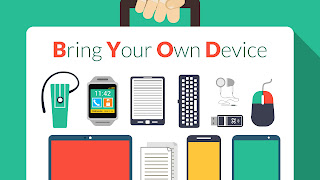Twitter Feed
Microsoft vs Google in Cloud Computing
Many took note of the Randall Stross essay in the New York Times last weekend. In it he succintly described why Microsoft is failing in it’s attempt to bridge the…
IBM at Forrester IT Forum
At the Forrester IT Forum yesterday in Las Vegas, Rick Lechner, VP Enterprise Systems at IBM, made the following comments The changing face of globalization (transformation from exporting to multi-nationals…
HP & EDS
In an interesting take on his Enterprise Architecture blog, Chris Pearson sees the HP acquisition of EDS as a ploy by HP to remain relevant in a cloud computing world.…
The Library of National Intelligence (LNI) – A Possible Cloud Application
In the MAZZ-INT Blog a couple of weeks ago, Joe Mazzafro artile on “Intelliigence and the Concept of Customer” stated that a “realistic business model for the IC to assume…
Net-Centric Enterprise Services – An Update
Net-Centric Enterprise Services (NCES) is about to enter the initial operational test and evaluation phase. NCES are a set of capabilities that support network-centric warfare operations and information sharing. It…
Microsoft Renews Yahoo Bid
Microsoft renews Yahoo bid and is now offering to buy a piece of Yahoo. I believe this is just the opening of the second round. Follow me at https://Twitter.com/Kevin_Jackson
Cloud Computing Risk
CIO.com reviewed the top three concerns that the IT executives have regarding the adoption of cloud computing – security, latency, and SLA. These concerns seem similar to those previously assigned…
Grid vs. Cloud – May 17, 2008
From Geva Perry’s April 25th blog Cloud Computing overtaking the term Grid Computing With the term “cloud computing” rapidly being hyped everywhere, I did this little exercise on Google Trends…
Blogsphere Clouds – May 16, 2008
The cloud is billowing in the blogsphere !! Virtual Computing in the Cloud — How a Universal Dialtone Will …Virtual Cloud Computing represents the next wave of virtualization and offers…
Gartner on Cloud Computing / Yahoo vs. Icahn- May 15, 2008
Gartner thinks that cloud computing may be the next big thing: By 2012, 80 percent of Fortune 1000 enterprises will pay for some cloud computing service and 30 percent of…
- Increased employee mobility (63%), satisfaction (56%) and productivity (55%) dominate as the top drivers of BYOD. These employee related drivers are considered more important than reduced costs (47%).
- Security (39%) and employee privacy (12%) are the biggest inhibitors of BYOD adoption.
- 20% of surveyed organizations have suffered a mobile security breach, primarily driven by malware and malicious WiFi.
- Security threats to BYOD impose heavy burdens on organizations’ IT resources (35%) and help desk workloads (27%).
- Despite increasing mobile security threats, data breaches and new regulations, only 30% of organizations are increasing security budgets for BYOD in the next 12 months and 37% have no plans to change their security budgets.
- 72% – Data leakage/loss
- 56% – Unauthorized access to company data and systems
- 54% – Downloading of unsafe apps or content
- 52% – Malware
- 50% – Lost or stolen devices
- 49% – Vulnerability exploitation
- 48% – Lack of control on endpoint security
- 39% – Infrequent software updates
- 38% – Compliance
1. Create your policy before procuring technology: To effectively use mobile device management (MDM) technology for employee owned devices Policy must precede technology. Also note that these policies will have broad corporate-wide implications for IT, HR, legal, and security.
- Mobile device management
- Application security assessments
- Application testing services
- Application source code security assessments; and
- Embedded device security.
This post was brought to you by IBM Global Technology Services. For more content like this, visit ITBizAdvisor.com.
( Thank you. If you enjoyed this article, get free updates by email or RSS – © Copyright Kevin L. Jackson 2017)
Cloud Computing
- CPUcoin Expands CPU/GPU Power Sharing with Cudo Ventures Enterprise Network Partnership
- CPUcoin Expands CPU/GPU Power Sharing with Cudo Ventures Enterprise Network Partnership
- Route1 Announces Q2 2019 Financial Results
- CPUcoin Expands CPU/GPU Power Sharing with Cudo Ventures Enterprise Network Partnership
- ChannelAdvisor to Present at the D.A. Davidson 18th Annual Technology Conference
Cybersecurity
- Route1 Announces Q2 2019 Financial Results
- FIRST US BANCSHARES, INC. DECLARES CASH DIVIDEND
- Business Continuity Management Planning Solution Market is Expected to Grow ~ US$ 1.6 Bn by the end of 2029 - PMR
- Atos delivers Quantum-Learning-as-a-Service to Xofia to enable artificial intelligence solutions
- New Ares IoT Botnet discovered on Android OS based Set-Top Boxes


